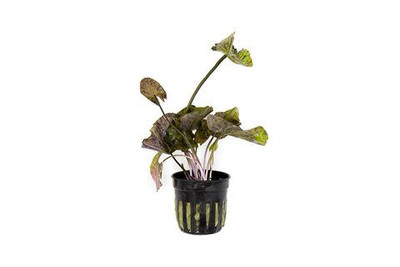Nymphaea Tiger Lotus
Posted by Max Gandara on on 18th May 2025
Nymphaea Tiger Lotus: The Bold Beauty of the Aquascape
If you're looking to add drama, color, and natural elegance to your aquarium, look no further than the Nymphaea Tiger Lotus. With its large, reddish-green leaves and distinctive tiger-like speckling, this aquatic plant brings a bold, tropical flair that few others can match.
Whether you're a seasoned aquascaper or a curious beginner, the Tiger Lotus is a rewarding addition that commands attention and invites admiration.
? Quick Plant Profile
| Attribute | Details |
|---|---|
| Common Name | Tiger Lotus, Red Tiger Lotus |
| Scientific Name | Nymphaea zenkeri |
| Type | Bulb Plant / Rosette |
| Position | Midground to Background |
| Light Needs | Medium to High |
| CO₂ | Optional (but enhances growth/color) |
| Growth Rate | Moderate to Fast |
| Origin | Africa (West Africa, especially Nigeria) |
? Why Choose Tiger Lotus?
? Color and Pattern
Its vibrant red to burgundy leaves with unique dark spots create a visually striking contrast in green aquascapes.
? Versatile Growth Style
The Tiger Lotus can be trimmed to stay low and bushy, or allowed to grow surface-reaching lily pads for a dramatic jungle-style look.
? Adaptable
It thrives in a wide range of conditions and does well in both low-tech and high-tech planted tanks.
? Focal Point Plant
Its bold shape and coloration make it perfect for drawing attention to specific areas in your layout.
?️ Ideal Tank Conditions
| Parameter | Ideal Range |
|---|---|
| Temperature | 22–28°C (72–82°F) |
| pH | 6.0–7.5 |
| KH/GH | Soft to moderately hard water |
| Substrate | Nutrient-rich or supplemented |
| Lighting | Medium to high intensity |
? Tip: Root tabs or a nutrient-rich substrate are recommended, as the plant is a heavy root feeder.
? How to Plant Tiger Lotus
-
Plant the Bulb, Not Too Deep:
Only bury about 1/3 of the bulb in the substrate. If you plant it too deep, it may rot. -
Give It Space:
This plant grows large! Leave several inches between it and neighboring plants to avoid shading. -
Encourage or Trim Surface Growth:
-
Want floating lily pads? Let the plant grow freely.
-
Prefer a compact bush? Trim long stems as soon as they develop.
-
-
CO₂ & Fertilizers:
Optional, but both enhance color intensity and promote faster, denser growth.
✂️ Maintenance Tips
-
Trimming: Regularly cut surface-reaching stems if you want to keep it compact.
-
Leaf Control: Older leaves may melt occasionally—remove them to keep the tank tidy.
-
Fertilizing: Use root tabs monthly, or dose water column fertilizers for lush foliage.
-
Bulb Dormancy: Occasionally, the bulb may go dormant—leave it in the tank. It usually regrows.
? Tankmate Compatibility
Tiger Lotus is safe for most fish, including:
✅ Good with:
-
Tetras
-
Gouramis
-
Angelfish
-
Shrimp (they love hiding beneath the broad leaves)
-
Corydoras
❌ Avoid pairing with:
-
Large cichlids or goldfish, which may uproot or damage it
? Aquascaping Ideas
-
Nature and Jungle Style: Let the Tiger Lotus send up floating leaves to create dappled light and a natural "canopy" effect.
-
Dutch Style: Use it as a bold midground accent plant surrounded by finer-leaved greenery.
-
Blackwater Biotope: The red tones contrast beautifully against darker substrates and tannin-stained water.
? Fun Facts
-
The Tiger Lotus is a true water lily, related to the massive lotus flowers seen in ponds.
-
It produces floating leaves and even blooms in open-top tanks under strong lighting.
-
Its tiger-like spots come from anthocyanin pigments, which become more pronounced under bright light and with iron supplementation.
✅ Conclusion: A Must-Have for Bold Aquascapes
With its vibrant coloration, adaptable growth, and dramatic foliage, the Nymphaea Tiger Lotus is a crown jewel in any planted tank. Whether you use it to create contrast, provide shade, or simply add a pop of red, this aquatic plant brings a unique, tropical charm that few others can rival.
Ready to give your aquascape a wild, beautiful twist? The Tiger Lotus is calling.

